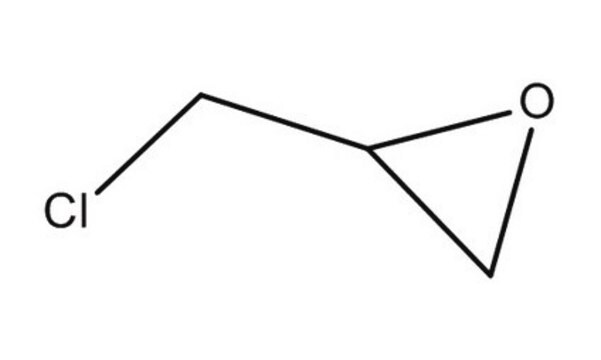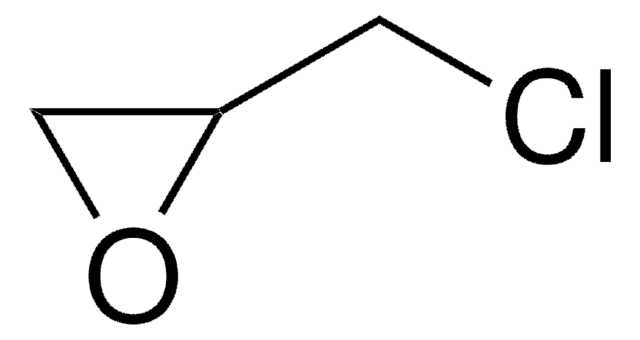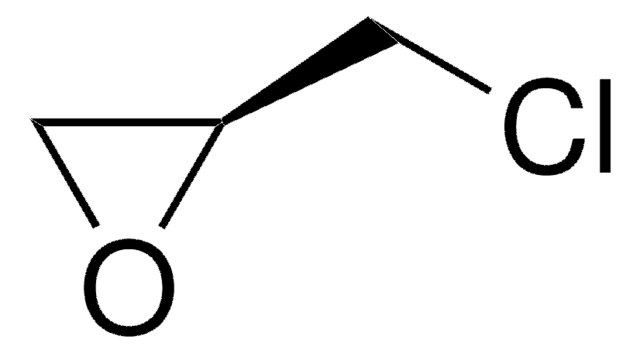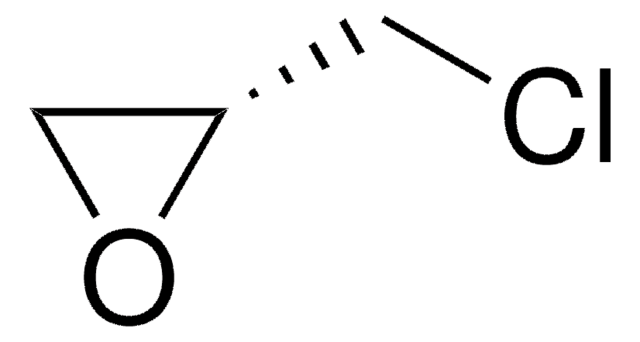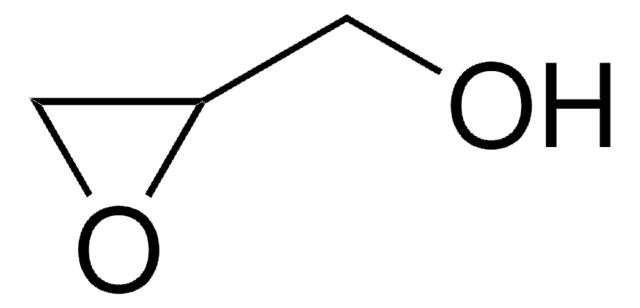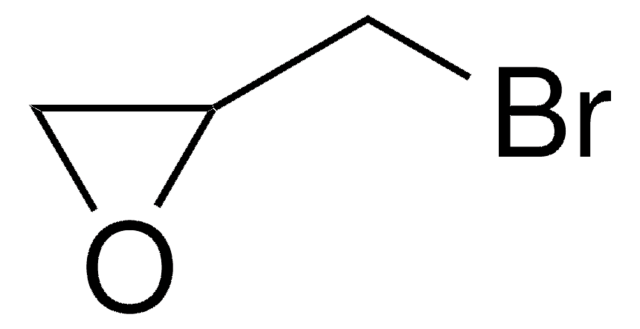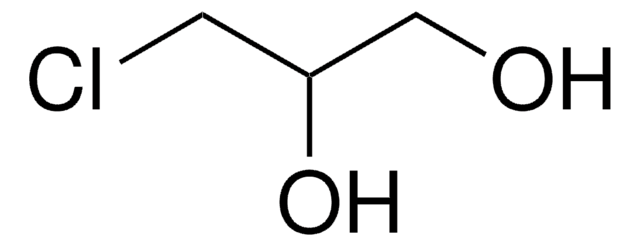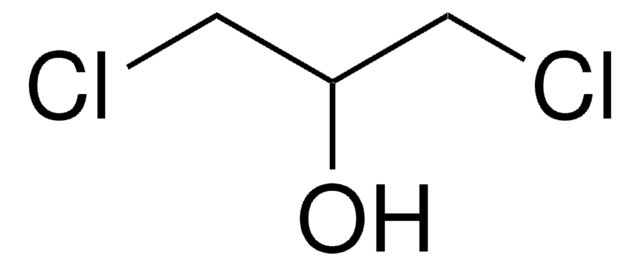45340
(±)-Epichlorhydrin
purum, ≥99% (GC)
Synonym(e):
(±)-2-(Chlormethyl)oxiran, 1-Chlor-2,3-epoxypropan
About This Item
Empfohlene Produkte
Dampfdichte
3.2 (vs air)
Qualitätsniveau
Dampfdruck
13.8 mmHg ( 21.1 °C)
Qualität
purum
Assay
≥99% (GC)
Selbstzündungstemp.
779 °F
Expl.-Gr.
21 %
Verunreinigungen
≤0.1% water
Farbe
APHA: ≤20
Brechungsindex
n20/D 1.438 (lit.)
n20/D 1.438
bp
115-117 °C (lit.)
mp (Schmelzpunkt)
−57 °C (lit.)
Dichte
1.183 g/mL at 25 °C (lit.)
Anwendung(en)
agriculture
environmental
Funktionelle Gruppe
chloro
ether
Lagertemp.
room temp
SMILES String
ClCC1CO1
InChI
1S/C3H5ClO/c4-1-3-2-5-3/h3H,1-2H2
InChIKey
BRLQWZUYTZBJKN-UHFFFAOYSA-N
Suchen Sie nach ähnlichen Produkten? Aufrufen Leitfaden zum Produktvergleich
Verwandte Kategorien
Allgemeine Beschreibung
Anwendung
- Pitfalls in the synthesis of fluorescent methotrexate oligopeptide conjugates.: Diese Studie behandelt die Herausforderungen bei der Synthese fluoreszierender Methotrexat-Konjugate mit Fmoc-Lys(Boc)-OH mit dem Ziel, peptidbasierte Verabreichungssysteme zu optimieren (Sebestyén et al., 2016).
- Fluoreometric behavior of a novel bis-acridine orange bound to double stranded DNA.: Untersucht die fluoreszierenden Eigenschaften einer in Fmoc-Lys(Boc)-OH integrierten Bis-Acridin-Verbindung für mögliche Anwendungen in DNA-Interaktionsstudien (Takenaka et al., 2003).
- Bis-naphthalene diimide exhibiting an effective bis-threading intercalating ability.: Untersucht ein durch Fmoc-Lys(Boc)-OH gefördertes Bis-Naphthalin-Diimidderivats, wobei eine signifikante DNA-Interkalation deutlich wird, die für die Gentherapie und die molekularbiologische Forschung nützlich ist (Nojima et al., 2003).
- Novel synthesis of a tetra-acridinyl peptide as a new DNA polyintercalator.: Erläutert die Synthese eines neuen DNA-Polyinterkalators unter Verwendung von Fmoc-Lys(Boc)-OH und hebt sein Potenzial hervor, die molekulare Diagnostik und therapeutische Strategien zu verbessern (Ueyama et al., 2000).
Signalwort
Danger
Gefahreneinstufungen
Acute Tox. 3 Dermal - Acute Tox. 3 Inhalation - Acute Tox. 3 Oral - Carc. 1B - Eye Dam. 1 - Flam. Liq. 3 - Repr. 2 - Skin Corr. 1B - Skin Sens. 1
Lagerklassenschlüssel
3 - Flammable liquids
WGK
WGK 3
Flammpunkt (°F)
82.4 °F
Flammpunkt (°C)
28 °C
Persönliche Schutzausrüstung
Faceshields, Gloves, Goggles, type ABEK (EN14387) respirator filter
Hier finden Sie alle aktuellen Versionen:
Besitzen Sie dieses Produkt bereits?
In der Dokumentenbibliothek finden Sie die Dokumentation zu den Produkten, die Sie kürzlich erworben haben.
Artikel
Dmitri Simberg (University of Colorado Anschutz Medical Campus, USA) reviews the used of dextran and cyclodextrin for the synthesis of nanoparticles used in drug delivery applications.
Dmitri Simberg (University of Colorado Anschutz Medical Campus, USA) reviews the used of dextran and cyclodextrin for the synthesis of nanoparticles used in drug delivery applications.
Unser Team von Wissenschaftlern verfügt über Erfahrung in allen Forschungsbereichen einschließlich Life Science, Materialwissenschaften, chemischer Synthese, Chromatographie, Analytik und vielen mehr..
Setzen Sie sich mit dem technischen Dienst in Verbindung.